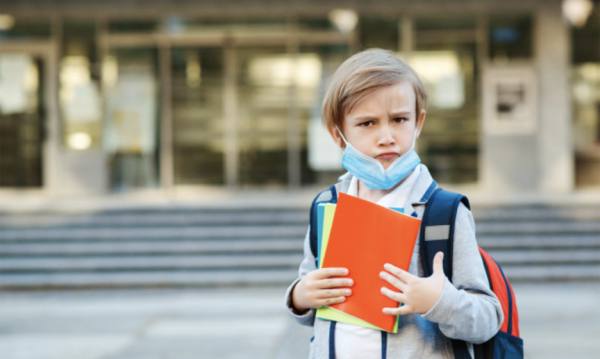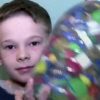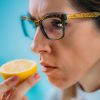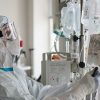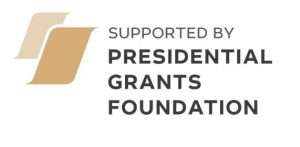 Starting from September 1, Russian students will return to schools, said the head of the Ministry of Education, Sergei Kravtsov. The Federal Service for the Oversight of Consumer Protection and Welfare (Rospotrebnadzor) has developed recommendations for educational institutions. Among them are measuring body temperature, disinfecting school premises, as well as reducing the number of students in classrooms. Doctors told Pravmir how to reduce the risk of a child being infected with coronavirus at school and what to prepare for before the new school year.
Starting from September 1, Russian students will return to schools, said the head of the Ministry of Education, Sergei Kravtsov. The Federal Service for the Oversight of Consumer Protection and Welfare (Rospotrebnadzor) has developed recommendations for educational institutions. Among them are measuring body temperature, disinfecting school premises, as well as reducing the number of students in classrooms. Doctors told Pravmir how to reduce the risk of a child being infected with coronavirus at school and what to prepare for before the new school year.
Children should not be deprived of their education for fear of infection, since children survive the coronavirus easily, the main task is to reduce their contact with elderly people who are at risk, says Polina Stepensky, head of the Department of Bone Marrow Transplantation, Cancer Immunotherapy, & Cell Therapy and Transplantation Research Center at the Israeli Hadassah Hospital.
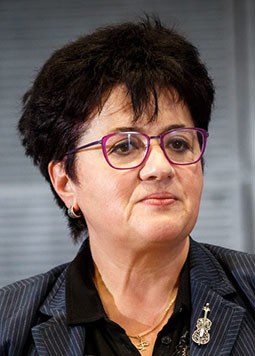
Polina Stepensky
– I think that after children return to school, there will be a surge in the incidence of covid-19. We know that children tolerate the coronavirus well and often show no clinical signs. That is, they can be infected, but no one will know about it. Therefore, as soon as they return to school, the number of coronavirus cases will increase.
In Israel, the second wave of coronavirus began precisely with schools.
Now we plan that junior classes will return to full-time studies, senior classes and universities are not yet returning to full-time studies. High school students will be divided into small groups and are required to wear masks.
This decision has been made because high school students are the main source of distribution. Besides the fact that they go to school, they meet with friends a lot, take walks, and go somewhere, that is, they lead a more active lifestyle and have more contact with their peers. Younger students mostly attend school and spend the rest of their time at home. In Israel, the second wave began precisely with opening high school.
In order to somehow contain the spread of the virus and reduce the risk of infection, children are required to wear a mask at school. This is justified. It is known that if a healthy person is in contact with a sick person who is wearing a mask, the chances of getting infected are about 30%, and if they are both wearing masks, then the chance is reduced to 1.5%.
Parents should try to explain to their children that they shouldn’t gather in large groups and they should wear masks. Nothing else can be done in this situation.
For any signs of a respiratory illness, children should be left at home and not allowed to go to school.
Any symptoms should be taken as coronavirus until a test is done and proven otherwise.
Because at the moment we have no way of distinguishing the coronavirus by its clinical picture from everything else.
It is clear that we will live with the coronavirus for a long time to come. It would be wrong to deprive children of education because of this. Weighing the pros and cons, we should definitely choose education.
The most important thing now is to protect those at risk. There is nothing wrong with a child getting infected. The main thing is that he or she should not be in contact with the elderly. Because the worst thing is to infect them.
Covid-19 affects children in a subtle way.
Children should be sure to observe safety measures when attending school, including washing their hands frequently, wearing masks and refraining from close contact with their peers. This will help reduce the risk of infection, says pediatrician Sulamith Wolfson.
– How will the epidemic develop after schoolchildren return to face-to-face studies?

Sulamith Wolfson
– It is impossible to make forecasts in this case. Nobody knows this at all.
The only thing that can be said with confidence is that when schools re-open in our usual full-time mode, the incidence of ARVI will increase to a certain extent, including the most common viruses: adenovirus, influenza, parainfluenza, and rhinovirus. They have not gone anywhere and will begin to manifest themselves more actively in the fall. The colder it gets, the more viruses there will be. This is normal. This happens every year, all parents know about it.
How much the incidence of coronavirus will increase is extremely difficult to predict.
– Is it advisable to send children to school in early September, or is it better to wait a while?
– Each parent must decide this issue for themselves. All families are different. Some live in the same apartment with an elderly person. In this case, people are more likely to minimize the risk of their child getting sick with some illness and bringing this illness home. And somewhere, on the contrary, the situation categorically does not allow leaving the child at home if, for example, all adults work.
Everything is very individual, and there is no single answer to this question. Everyone decides for themselves, based on their situation.
– What will help reduce the risk of contracting coronavirus for a child at school?
– Security measures are well known:
- Wash hands as often as possible.
- Wear a mask. If it is difficult to sit in a mask during the lesson, then instead, you can wear a protective transparent shield (a screen). It is a little easier to breathe in it, while it also protects.
- Keep your distance. The child needs to be explained that it is not worthwhile to closely communicate with their classmates.
– Isn’t it harmful for children to wear a mask for a long time?
– According to the WHO, wearing a mask is safe and helps prevent the coronavirus infection.
Do not forget that any mask needs to be changed after 3-4 hours of continuous wearing.
– In case of illness, how to recognize if a child has a coronavirus or ARVI?
– There are no clear criteria. COVID-19 is often subtle or erased in children. And it almost completely mimics numerous other diseases. It is impossible to say whether it is covid-19 or not until the tests are done, and not a CT scan, but a PCR test. There are no unambiguous clinical manifestations to say that this is definitely covid-19.
– Does it make sense to immediately do an analysis for covid-19 when symptoms appear?
– Depending on the epidemiological situation. There is no difference for the appointment of therapy, because there is still no medicine for treating this particular virus, and the principle of treatment is the same: drinking plenty of water and using antipyretic if necessary. We wait for the body to cope with the virus itself.
If we learn that it is covid-19, nothing will change in the treatment. But this knowledge is important for those whom the child was in contact with in order to prevent the spread of the infection further. That is, it is advisable for everyone in contact with the child to observe quarantine for two weeks. This is a way to prevent the spread of the infection.
– If there are no symptoms, should the test be done regularly?
– I am afraid that this is already a strong reinsurance. If it calms someone down, why not. But if the child has completely no symptoms, this should be done only if they were in contact with a coronavirus patient.
– What symptoms can you recover from at home, and what symptoms indicate that you must call a doctor?
– If a child has symptoms of a common cold, that is cough, runny nose, slight discomfort and slight fever, it is quite possible for them to stay at home for up to three days without consulting a doctor.
Naturally, the child should be evaluated by a doctor if the child has a high fever and / or symptoms that go beyond the usual mild cold.
If we talk about social responsibility, now for any cold, you need to call a doctor to get a test and limit the spread of the infection.
– How not to miss the Kawasaki-like syndrome?
– This syndrome is a potential complication of COVID-19 in children. It is rare enough. Its main symptom is high fever. If there is no fever, then it is anything but Kawasaki-like syndrome.
If the high temperature lasts more than a day, the child feels very ill, their general condition worsens, you need to call a doctor who will determine whether you need to urgently go to the hospital or not.
– Do you need to do routine vaccinations this fall?
– This must be done without fail, if possible. Because, despite the coronavirus, the infections, that people were vaccinated against before, existed, exist and will continue to exist.
– Should children be vaccinated against the flu this year?
– Without fail. Moreover, in September it can and should be done.
It is imperative to vaccinate, because the covid-19 allows itself to exist together with another virus. This is a real situation when a person has both the flu and the COVID-19 infection.
Both infections are potentially quite dangerous, their combination is doubly dangerous. We cannot protect ourselves from covid-19, but at least we can protect ourselves from the flu.
Now you can’t go to school with a runny nose
The epidemiological situation makes it possible to open schools, but in case of any respiratory symptoms, the child needs to stay at home, says pulmonologist Vasily Shtabnitsky.
– What to expect after children return to school? Is the return to full-time study justified?

Vasily Shtabnitsky
– It is extremely difficult to predict, but so far the whole story tells us that in the fall there is an increase, a jump in the incidence of respiratory infections transmitted by airborne droplets. Many organized groups appear in the fall: schools, kindergartens, institutes. Also, many return from a vacation, children return from summer camps. That is, it is a complex problem.
There is nothing we can do here. But the flip side of this is that society must function, including learning and working.
Given the more or less favorable epidemiological situation, such education is possible.
We weigh pros and cons. So far, the reality is that it is necessary to wait until a super-effective vaccine against coronavirus appears and, most likely, its mass use will not be possible until the next season.
Waiting in isolation is not exactly the right tactic. It seems to me that children can start going to school. Despite the fact that we now have proven diagnostic tools, a good disease monitoring system, several tests that are widely available. That is, we will be able to recognize the approaching wave of coronavirus and take some measures, including quarantining schools again.
– What measures can be taken in schools to reduce the risk of infection for children?
– It is possible to widen the distance between the desks, to conduct classes in masks, to restrict the movement of children around the school, and perhaps to carry out class changes without letting the children out into the corridor.
In the event of any respiratory symptoms, it is necessary to inform the doctors, and most importantly, not to go to school. This applies to both children and teachers.
If earlier parents could let a child go to school with a runny nose and this was not considered something special, now we cannot afford such a luxury, since this can lead to an outbreak of the coronavirus infection at school, then, perhaps even on a more global scale – in a neighborhood or a city.
– Isn’t it harmful for a child to sit in a mask all day?
– No, it is not harmful. The mask can in no way harm, it does not block oxygen, does not in any way worsen the condition of either children or adults. An exception is when a person is allergic to the components of the mask.
– Does it make sense to regularly test students for covid-19?
– Mass testing does not save a group. In general, this does not make much sense, but it can create a colossal burden on health care.
– What should parents remember if a child is sick?
– In general, children manage coronavirus much more easily than adults, and, as a rule, they carry it like a common ARVI. Children are not at high risk of death from coronavirus.
There is a separate condition that you need to be aware of, but it happens extremely rarely, in isolated cases, it is the Kawasaki-like syndrome. It is the only complication in children that can be significant.
Its symptoms are severe fever, which does not decrease on its own, there may be abdominal pain and some neurological manifestations, for example, irritability, redness of the vessels of the eyes, a characteristic rash appears on the body, and sometimes in the perineal region. The disease is somewhat similar to scarlet fever, and the symptoms that are characteristic of it appear, including red dry lips, sore throat, raspberry tongue, and enlarged cervical lymph nodes.
But you should not look for this disease in every child, this complication appears only in isolated cases.












